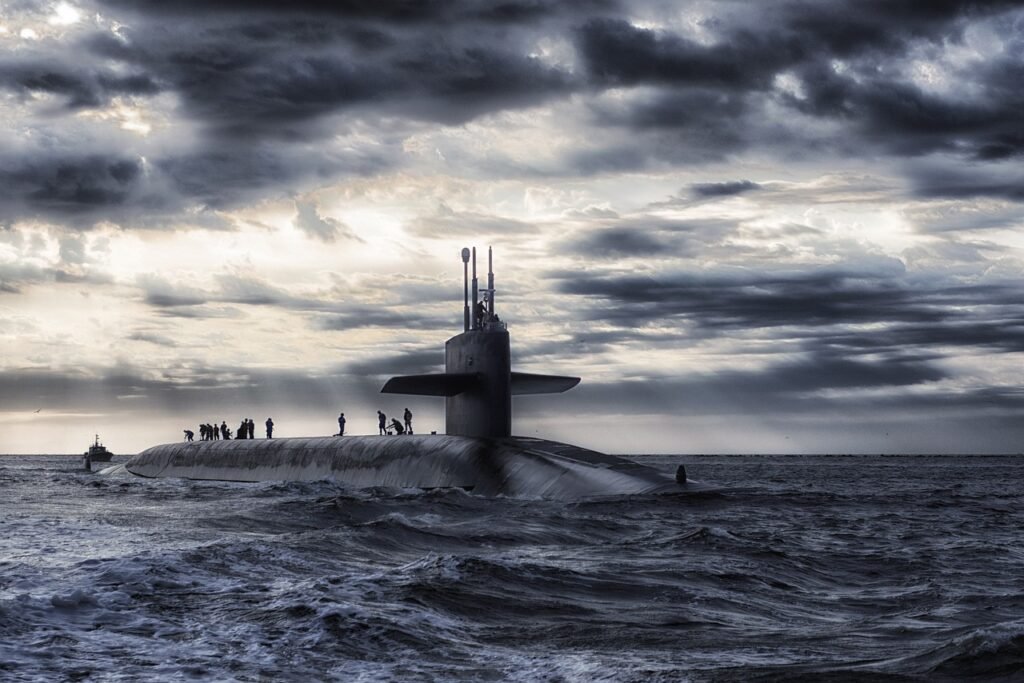Submarine warfare during World War II represented a significant evolution in naval combat, with submarines playing a more crucial role than ever before. While submarines had existed since the 19th century and had seen action in World War I, it was during the second global conflict that they truly demonstrated their potential.
The Submarine’s Role
Submarines, with their ability to remain submerged and hidden, presented a unique tactical advantage. They could stealthily approach enemy fleets, disrupt shipping lanes, and conduct reconnaissance missions. This made them invaluable assets for navies across the world.
The Key Players
- Germany’s U-boats: Germany’s U-boat force was arguably the most famous and impactful submarine force of WWII. Led by Admiral Karl Dönitz, the U-boats were tasked with disrupting Allied shipping, especially in the North Atlantic. The Battle of the Atlantic was a prolonged and deadly game of cat and mouse between the U-boats and Allied convoys, with both sides suffering substantial losses.
- The United States’ Submarines: In the Pacific, American submarines played a pivotal role in countering Japan. Using a strategy similar to Germany’s, American subs aimed to cut off Japanese supply lines, strangling the island nation’s economy and military.
- British Submarines: The Royal Navy, too, had its fleet of submarines which played various roles, including supporting the main fleet, disrupting Axis shipping, and special operations.
- Other notable submarine forces included those of Japan, Italy, and the Soviet Union, each having its sphere of operation and challenges.
Tactics and Technology
During the war, tactics and technologies evolved rapidly. One significant change was the development of better sonar (ASDIC in British service) and radar technology, which made detecting submarines easier. As a countermeasure, submarines began to dive deeper and were designed to be quieter.
Germany introduced the snorkel, which allowed U-boats to run their diesel engines while submerged, limiting their exposure on the surface where they were more vulnerable to aircraft.
Torpedo technology also advanced. The United States notably faced issues with its Mark XIV torpedoes’ performance early in the war. But once these issues were resolved, American submarines became even more deadly.
The Human Aspect
Submarine warfare was grueling and tested sailors’ limits. Submariners faced long hours in confined spaces, the ever-present threat of depth charges, and the psychological stress of prolonged submerged periods. The crews formed tight bonds, relying on each other for survival in the harsh conditions of underwater warfare.

Impact on the War
Submarine warfare had a significant strategic impact:
- Economic Warfare: By targeting merchant vessels, submarines aimed to cripple the enemy’s ability to wage war. The U-boat campaign almost brought Britain to its knees in the early years, while American submarines decimated Japan’s merchant fleet, contributing to its eventual surrender.
- Naval Dominance: Submarines posed a severe threat to surface fleets. Battleships, carriers, and other vital vessels had to be continuously wary of underwater threats.
- Intelligence Gathering: Stealth and the ability to operate behind enemy lines made submarines perfect for reconnaissance and intelligence missions.
The Endgame and Legacy
As the war progressed, the Allies gained the upper hand in the submarine war. Better detection technology, combined with more escorts and patrol aircraft, made it increasingly risky for submarines to operate.
By war’s end, submarines had proven their worth and solidified their place in modern navies. The lessons learned from World War II submarine warfare influenced naval strategies and submarine designs for decades to come.
Today, as we look back, it’s essential to recognize not only the strategic importance of submarines but also the human cost. Thousands of submariners, both Allied and Axis, lost their lives beneath the waves, making ultimate sacrifices for their countries.
In conclusion, World War II submarine warfare was a game-changer in naval combat. It was a theatre of war marked by technological innovation, strategic importance, and immeasurable courage displayed by the men who went down to the sea in ships, and in some cases, never returned.




